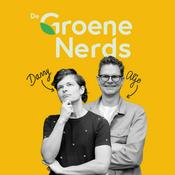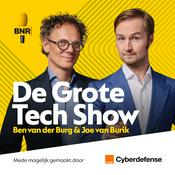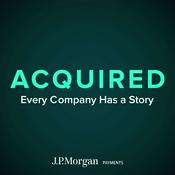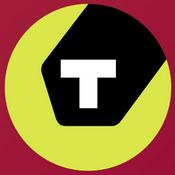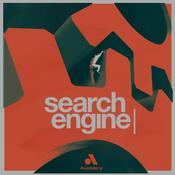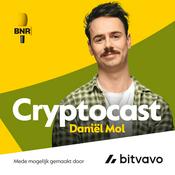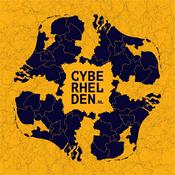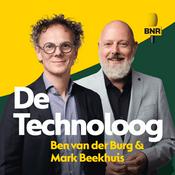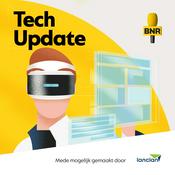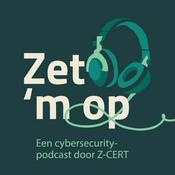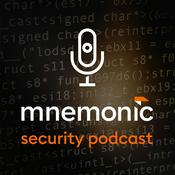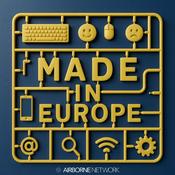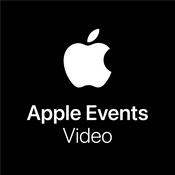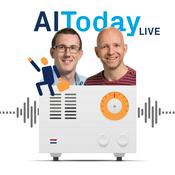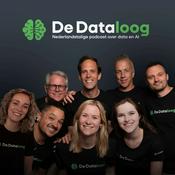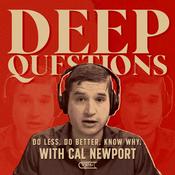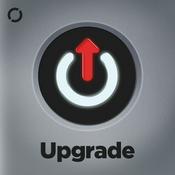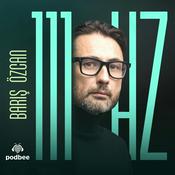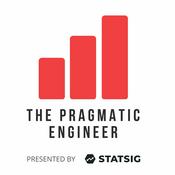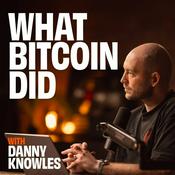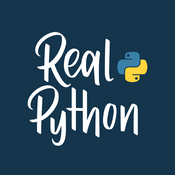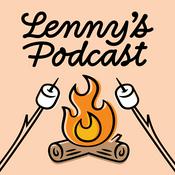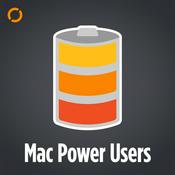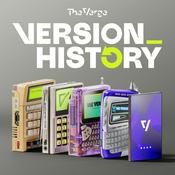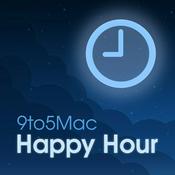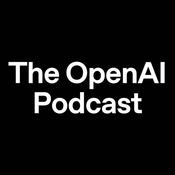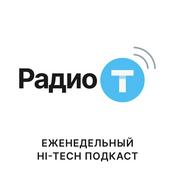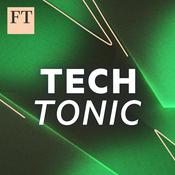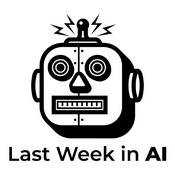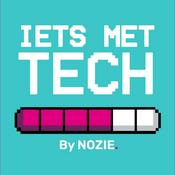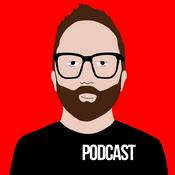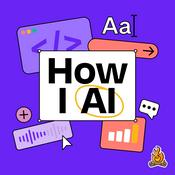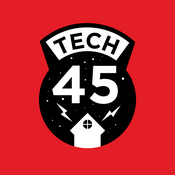13 afleveringen
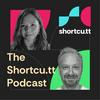
Platform Engineering Maturity Model with Stefan Daugaard Poulsen | The Shortcu.tt Podcast episode 12
05-6-2025 | 50 Min.
In this episode, Stefan, currently a Solutions Architect at Eficode, walks us through the Platform Engineering Maturity Model, a framework published by CNCF that guides platform teams int different stages of maturity. Find out why it matters, and how your platform teams can use it to drive real impact in your organization.Timestamps & Highlights[00:01:57] Platform Engineering “Beetlejuice”Stefan explains his deep involvement in platform engineering and his role in the Cloud Native Platforms Working Group[00:02:34] Why a Maturity Model?The team discusses the origins of the Platform Maturity Model, its purpose as a framework for honest self-assessment, and how it’s more about product thinking than technology.[00:06:21] Five Aspects of MaturityStefan breaks down the five key aspects: Investment, Adoption, Interface, Operations, and Measurement—each a lens for reflection, not a checklist[00:10:17] The Four LevelsThe maturity model’s levels—Provisional, Operational, Scaling, Optimization—are explained, emphasizing that most organizations are a mix, and that’s normal[00:12:39] Using the Model in PracticeDiscussion on how to use the model for strategic conversations, prioritizing aspects, and making trade-offs rather than chasing perfect scores[00:16:36] The Critical Role of InvestmentWhy investment is often the precursor to maturity in other areas, and how demonstrating value helps secure buy-in[00:18:24] Aligning Platform Outcomes with Business GoalsHow platform teams can connect their work to business outcomes, reduce cognitive load, and win over stakeholders[00:22:14] Build vs. Buy and the Thinnest Viable PlatformStefan’s advice: start small, buy or adopt before building, and expand as your needs grow—don’t get lost in the tech rabbit hole[00:26:20] Roadmaps, Prioritization & Product ThinkingThe challenge of prioritizing features, the importance of user feedback, and treating the platform as a product[00:32:22] Community: Start Early, Not LateWhy building community is essential from day one, and how engagement shifts from feedback to contribution as maturity grows[00:35:16] Metrics that MatterTop metrics for platform teams: adoption rate, feature requests, and actionable feedback—not just Dora metrics[00:39:25] Organic vs. Forced AdoptionReal-world stories of platforms that succeed by attracting users rather than mandating adoption, especially in regulated industries[00:44:18] The Reality of Internal CompetitionThe dynamics of teams running their own stacks, executive mandates, and the politics of platform adoption[00:46:13] The Model as a Conversation StarterThe maturity model is a tool for honest discussion, not a rigid scoring system—use it to balance priorities and set realistic roadmaps[00:49:22] Shortcut to SuccessStefan’s practical takeaway:“Never forget: a pot of coffee and a bag of cookies takes you a long way. Go talk to somebody you haven’t talked to for a while or ever, because you need to broaden your community and create awareness about your platform. If you have it, bring some stickers as well.”Resources MentionedCNCF Platform Engineering Maturity ModelConnect With UsStefan Daugaard PoulsenMorten ChristensenMarilag Svennevig

Evolving Engineering at Banking Circle with Juan Herreros
14-5-2025 | 42 Min.
Episode Overview:Morten and Marilag sit down with Juan Herreros, a principal engineer at Banking Circle, to talk about how Banking Circle evolves its platform engineering practices.Timestamps:[00:00:07] - Introduction[00:00:33] - Juan's Background: From Spain to Denmark, career path in fintech.[00:01:46] - Banking Circle Overview: Mission and services in cross-border payments.[00:03:01] - Engineering Structure: Team divisions and technology stack.[00:05:58] - DevOps Evolution: Transition to a centralized cloud engineering team.[00:08:04] - Initial Challenges: Dependency on a single person for infrastructure.[00:10:26] - Improvements: Code-first mentality and reusable components.[00:15:19] - Kubernetes Adoption: Overcoming challenges and enhancing developer experience.[00:18:46] - Developer Support: Internal demos and centralized communication channels.[00:23:02] - Driving Adoption: Strategies for educating and empowering developers.[00:25:02] - Reluctance to Change: Addressing developer concerns about Kubernetes.[00:32:00] - Future Plans: Enhancing YAML-based approach and developing user-friendly UIs.[00:38:34] - Success Metrics: Measuring uptime, deployment frequency, and adoption rates.[00:40:33] - Juan's Shortcut: Advice on empathy and understanding user needs.Highlights:Empathy in Engineering: Juan emphasizes the importance of understanding user needs to build effective solutions.Continuous Improvement: Banking Circle's journey towards operational consistency and better developer experience.Metrics for Success: Measuring uptime, deployment frequency, incident count, and adoption rates to ensure business alignment.Sign up at shortcu.tt to receive the latest episodes straight to your inbox.

Code Reviews that don't hurt with Adrienne Braganza Tacke | The Shortcu.tt podcast
28-4-2025 | 54 Min.
In this episode, we’re joined by Adrienne Braganza Tacke — software engineer, author of “Looks Good To Me”, and developer advocate at Viam. From her inspiring journey into tech, to demystifying the code review process and building team empathy, Adrienne shares the hard truths on how we can make code reviews faster, kinder, and more effective.We talk about her triple-R feedback pattern, cultural differences in feedback, and why your team needs a living working agreement.This episode is a must for engineering leaders, team leads, and developers navigating feedback fatigue or aiming to build a dev culture where everyone can grow from helping each other write better code.⏱️ Timestamps: [00:00] Adrienne’s intro + unconventional tech journey [02:22] From helpdesk to .NET developer to DevRel at Viam [03:33] Why Adrienne wrote a book on code reviews [06:04] The emotional layer of code reviews [10:36] Cultural nuances in feedback and code review etiquette [14:11] Giving great feedback: objectivity, support, outcome [17:14] Why teams argue over code reviews & the power of working agreements [22:45] In-person vs async reviews + pair programming as pre-review [29:06] Startups vs enterprises: customizing code review processes [37:38] Should AI review our code? Adrienne’s take on AI tooling [45:07] Measuring dev productivity with caution [50:13] Adrienne’s shortcut: the Triple R Pattern [52:45] Tagging review comments: "needs fix", "nitpick", and more [54:01] Wrap-up + final thoughts on dev culture and feedback📚 References & Resources: Looks Good to Me by Adrienne Braganza, https://www.manning.com/books/looks-good-to-me Paul Slaughter’s Conventional Comments AI tool: CodeRabbit AI Developer Productivity Metric Concerns: GitHub Engineering Blog Book Reference on Feedback Culture: Radical Candor by Kim Scott

Championing Culture and Engineering Strategy with Aleix Morgadas | The Shortcu.tt Podcast
01-4-2025 | 55 Min.
In this episode of shortcu.tt, hosts Morten and Marilag speak with Aleix Morgadas—engineering strategist, founder of Temperature, and writer on engineering strategy. Together, they explore how engineering strategy, team culture, and cognitive load shape the way modern tech teams operate.Drawing from his experience at companies across Europe, Brazil, and the United States, including ThoughtWorks Creditas & AtomicJar, Aleix offers a thoughtful take on aligning software teams, scaling leadership, and building healthy engineering cultures.🕒 Episode Timestamps:00:01:00 – Aleix’s path from developer to strategist00:03:00 – Engineering culture: Europe vs. Brazil vs. the US00:06:00 – How culture impacts software delivery00:10:00 – Why engineers struggle to describe company culture00:14:00 – Giving and receiving feedback across cultures00:18:00 – What is engineering strategy—and why does it matter?00:26:00 – Common strategy pitfalls and how to avoid them00:31:00 – Roadmaps vs. strategy: where they overlap and differ00:40:00 – Cognitive load: how to measure and reduce it00:49:00 – Behind Temperature: using data to improve engineering teams00:54:00 – Aleix’s shortcut to building a meaningful strategy💡 What You’ll Learn:How to define and implement an engineering strategyThe impact of team culture on collaboration and deliveryWhy cognitive load is key to understanding developer productivityPractical tools and frameworks for engineering leadership🔗 Resources & Links:Alex’s Substack – Thoughtful essays on engineering strategyTeamperature – A tool to measure cognitive load and team focus 💬Connect with UsAleix MorgadasMorten Christensen Marilag Svennevig

Retrospective: internal developer portals
12-3-2025 | 39 Min.
In this special episode of Shortcu.tt Podcast, hosts Morten & Marilag take a retrospective look at past episodes, sharing key takeaways on starting a podcast on developer experience and what they have learned from their guests about internal developer portals🔹 Why does developer experience matter for teams of all sizes?🔹 When should a company invest in an internal developer portal?🔹 What shortcuts can teams take to succeed in using idps00:00 – 00:35 | 🎙️ Introduction – Retrospective on past episodes & what we’ve learned.00:35 – 01:15 | 🌍 A European Perspective on Developer Experience – How engineering culture differs from the U.S.01:15 – 02:17 | 🏗️ The Purpose of Developer Portals – Not every company needs one, but every company needs good DX.02:17 – 03:33 | 🔎 Start Small: Rolling Out Internal Developer Portals – Avoiding complexity & focusing on pain points.03:33 – 05:07 | 🚀 Developer Experience in Different-Sized Teams – When does it make sense to invest?05:07 – 06:50 | 📊 The 3 Biggest Developer Pain Points – Finding APIs, documentation, and tools.06:50 – 08:17 | ⏳ Onboarding & Productivity – Why onboarding speed is the best DX test.08:17 – 10:03 | 🛠️ Automation & Self-Service – Reducing manual friction in workflows.10:03 – 12:19 | 🤝 Building Strong Developer Communities – Knowledge-sharing and engineering culture.12:19 – 14:35 | 🔄 Developer Portals & Information Architecture – The challenge of organizing and curating knowledge.14:35 – 17:21 | 🌟 Transparency, Metrics & Self-Service – How visibility improves productivity.17:21 – 20:42 | 🏆 Maturity & Engineering Excellence – Why teams should take ownership of their internal tools.20:42 – 23:59 | 🔍 Inner Sourcing & Open Collaboration – How teams can contribute to internal tools & portals.23:59 – 27:37 | 💬 Continuous Discovery & Feedback Loops – How engineers can create better DX through iteration.27:37 – 31:14 | 📢 Why Developers Need to Provide Feedback – Breaking complacency in organizations.31:14 – 35:00 | 🚀 The Shortcut to Better Developer Experience – Final takeaways & the next steps in platform engineering.Connect with Us:Morten Christensen - https://www.linkedin.com/in/mortenchr/Marilag Svennevig - https://www.linkedin.com/in/marilag/
Meer Technologie podcasts
Trending Technologie -podcasts
Over The Shortcu.tt Podcast
Luister naar The Shortcu.tt Podcast, De Groene Nerds en vele andere podcasts van over de hele wereld met de radio.net-app

Ontvang de gratis radio.net app
- Zenders en podcasts om te bookmarken
- Streamen via Wi-Fi of Bluetooth
- Ondersteunt Carplay & Android Auto
- Veel andere app-functies
Ontvang de gratis radio.net app
- Zenders en podcasts om te bookmarken
- Streamen via Wi-Fi of Bluetooth
- Ondersteunt Carplay & Android Auto
- Veel andere app-functies


The Shortcu.tt Podcast
download de app,
luisteren.
